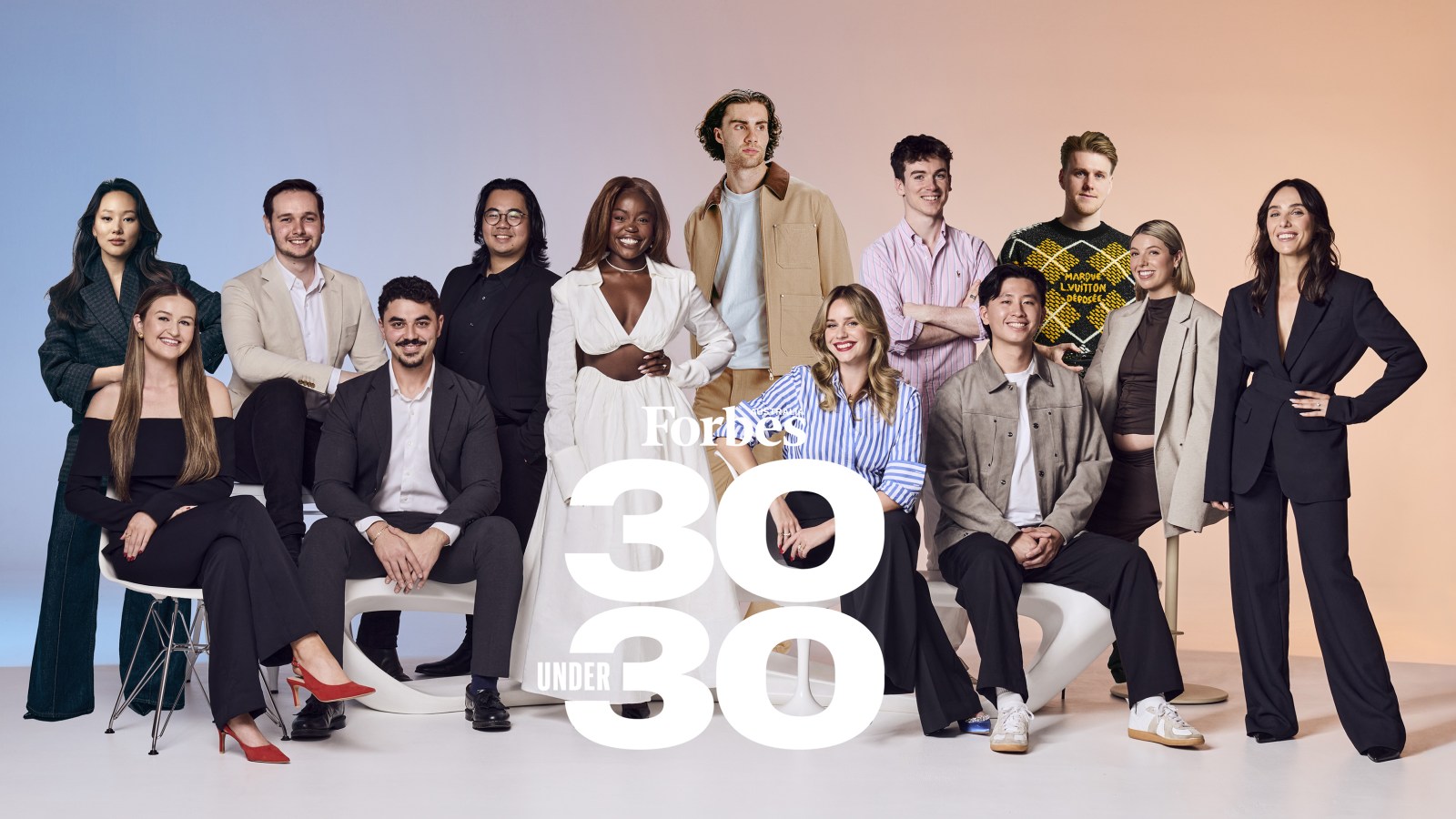From biology to the built world, these 23 homegrown deep tech startups are innovating their way to the future.
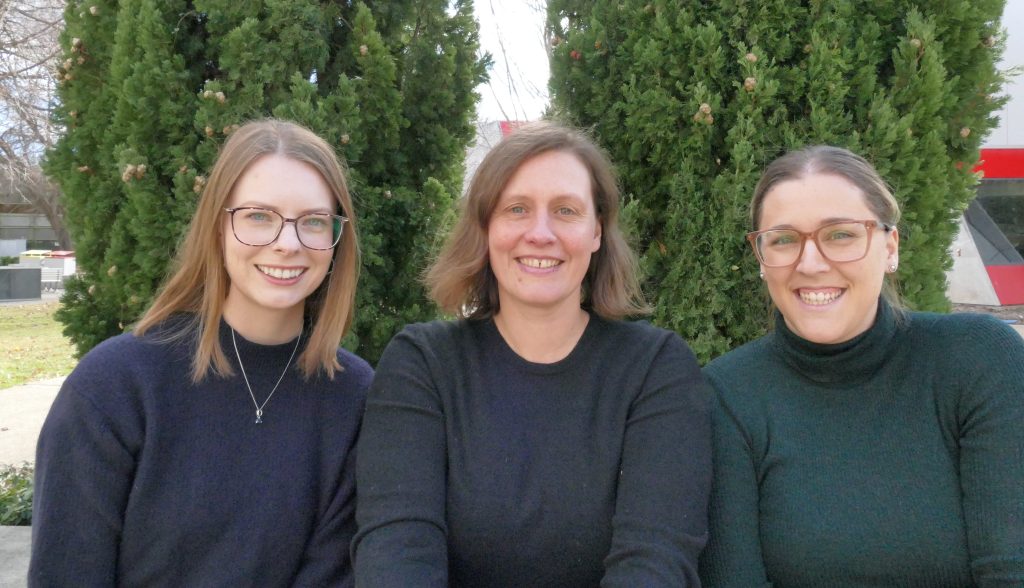
Caitlin Byrt was researching the salinity of barley in Scotland when she received an email from ANU suggesting she apply to run a research lab focused on engineering membrane proteins in Canberra.
The 37-year-old plant scientist put her name in the hat for the role, and weeks later found herself snowed in at Edinburgh airport, en route to ANU to meet the team and land the job.
The snow eased, the plane took off, and Byrt made it to Canberra just in time to deliver the seminar. By 2019, the PhD had relocated from her hometown of Adelaide to the nation’s capital and was getting the ANU Byrt Lab off the ground.
A year later, amid lockdowns and pandemic uncertainty, Byrt employed postdoctoral researchers Dr Annamaria De Rosa, who was 30 at the time, and 27-year-old Dr Samantha McGaughey. Today, the three dynamic women are the founders of MTE (Membrane Transporter Engineers), a spinout from ANU, and collectively pushing the frontier of crop improvement.
“We figured out how nature controls the harvest and recycling of critical resources and recognised that humanity could apply learnings from plant biology to optimise industrial critical resource management,” Dr Caitlin Byrt tells Forbes Australia.
“Our discoveries are applicable to the clean energy transition, achieving a circular economy, and to harvesting high-value resources from industrial wastes.”
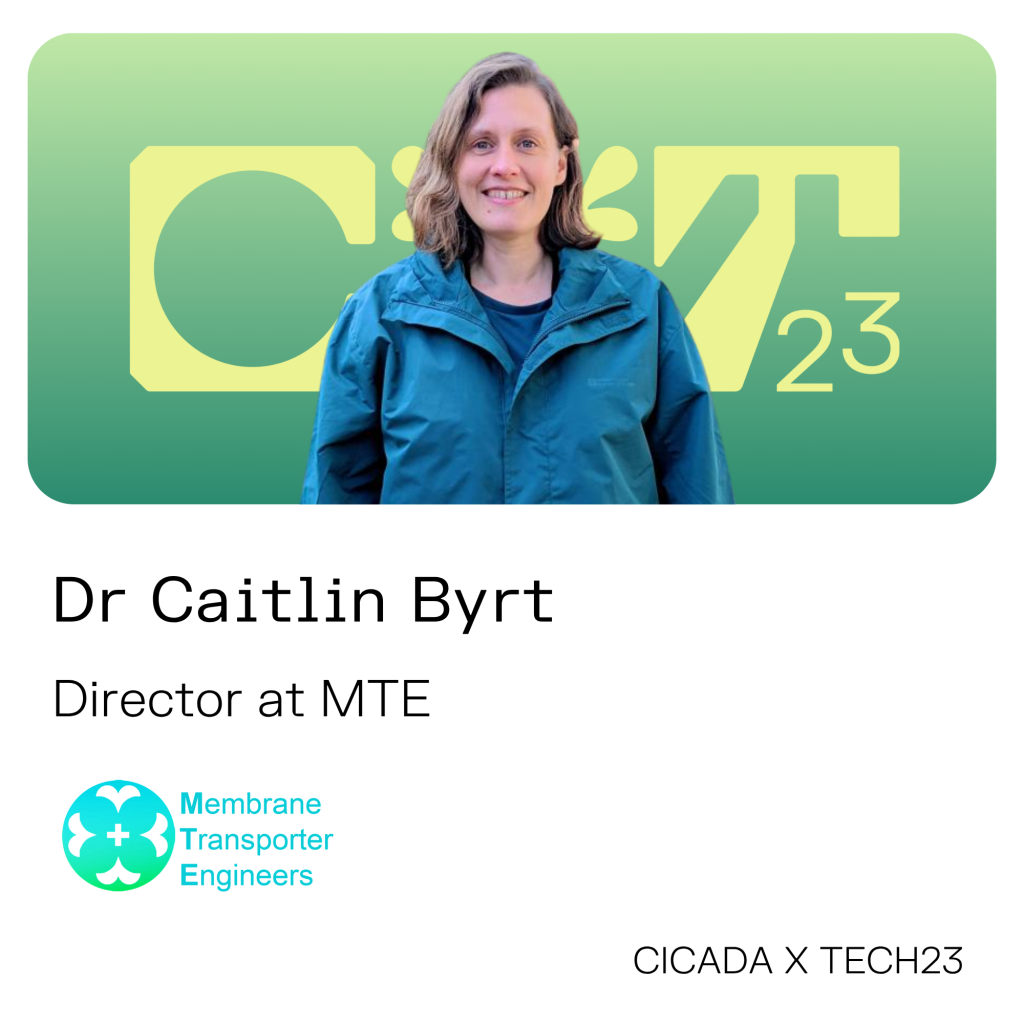
The innovation that MTE is spearheading caught the attention of Australian deep tech incubator Cicada Innovations, which named the company as one of their most exciting 23 startups this year.
Not only does it have great potential in the circular economy, MTE could prove to be highly lucrative for some of Australia’s most profitable industries.
“MTE technology is relevant to mining and agricultural industries where limitations in efficient access to critical resources like metals, nutrients and water are restricting productivity,” says Byrt. “The biotechnological advancements we are working on are relevant to harvesting and recycling billions of dollars worth of resources from industrial and urban wastes.”
Australia’s deep tech ‘factory’ – Cicada Innovations
Cicada is no stranger to deep tech. It has incubated more than 400 startups and helped raise more than $6 billion for them. Founded in 2000 by leading Australian academic institutions ANU, UNSW, the University of Sydney and UTS, Cicada’s mission statement is to solve complex global challenges by bringing together business, engineering, and science.
“For too long, we’ve treated deep tech as a series of isolated breakthroughs, rather than what it truly is, a systems-level opportunity to build new industries, strengthen sovereignty, and drive national productivity,” says Sally-Anne Williams, the CEO of Cicada Innovations.
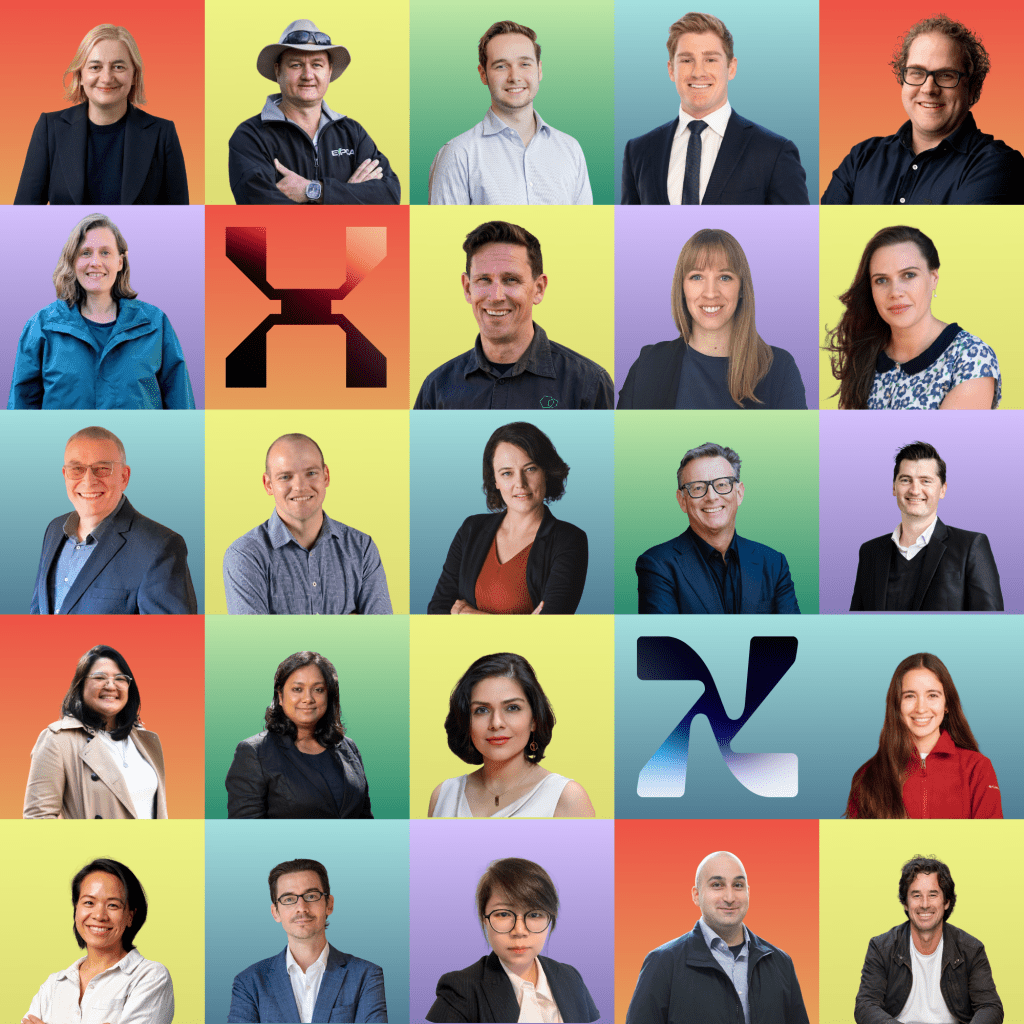
“Strategic procurement is one of the most powerful levers we have, and we’re not using it enough. If we want a future made in Australia, we need to back this kind of ambition early, consistently, and at scale. That means whole-of-government coordination and a shift in mindset, from simply funding innovation, to actively becoming first customers.”
Cicada Innovations was named because the large insect is known to “spend a long time developing unseen below ground before it finally emerges, fully formed. Deep tech ventures follow a similar arc,” according to the company.
Williams announced she will soon step down from leading Cicada. But she wants to see change happen in the deep tech space nonetheless.
“Strategic procurement is the single biggest lever we have to scale deep tech in Australia. Right now, brilliant science is being commercialised offshore not because the technology isn’t ready, but because there’s no early customer here,” Williams tells Forbes Australia.
“If we are serious about sovereign capability in quantum, bio-manufacturing, or medtech, government and industry must become first adopters. This means designing procurement that strategically backs local, early-stage innovation.”
Celebrating deep tech with Tech23
During Williams’ tenure as CEO, Cicada acquired theTech23 event – fourteen years after it was founded by Rachel Slattery. Now in its fourth year under the Cicada umbrella, Tech23 has revealed its 23 entrepreneurs for 2025.
Not only have the startups changed this year, so have the sovereign nature of the problems they are solving.
“We’ve watched the focus of Australia’s deepest tech shift from climate solutions to sovereign capability,” a Cicada spokesperson says.
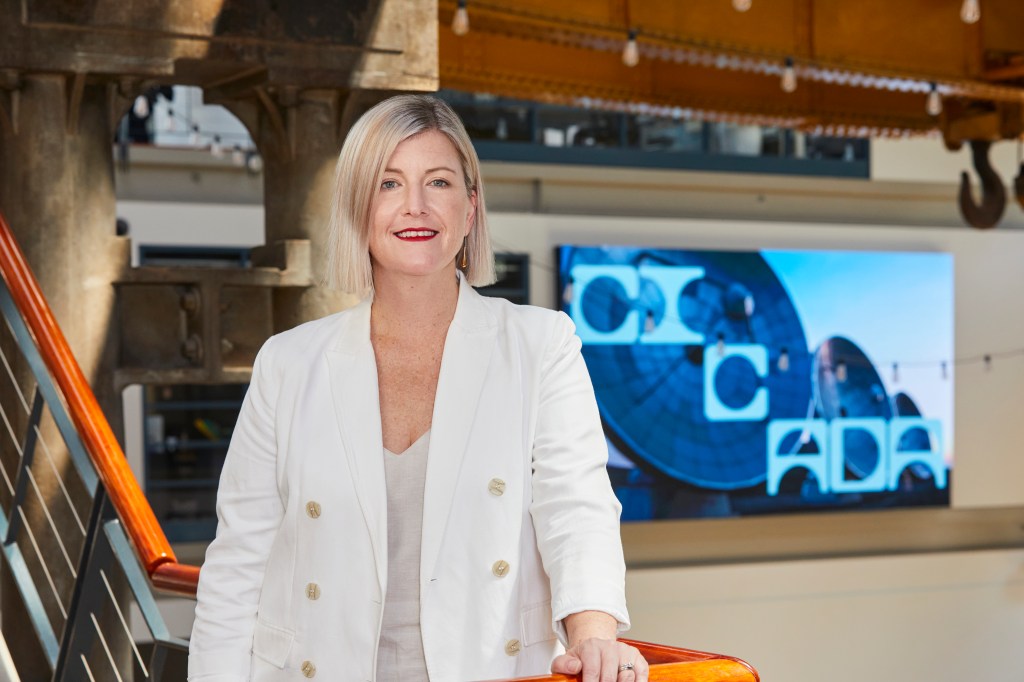
“The 2025 cohort zeroes in on national resilience: electro-refined copper and clean ammonia for critical minerals, battery-electric mining fleets, quantum-grade navigation for aerospace, and a wave of AI-driven health technologies from lab-on-a-patch diagnostics to an implantable artificial kidney.”
The 23 startups that are being recognised this year fall into five categories: Resources, biology as infrastructure, engineering, the care economy, and the built world.
“These 23 founders are not just advancing science,” says Williams. “They are stepping up as leaders, solving complex problems and shaping the industries we’ll rely on for decades to come. 70% of this year’s applicants were founded in the past five years, and many are led by women, First Nations innovators, and scientists with lived experience of the challenges they’re tackling.”
ANU’s Professor Caitlin Byrt, Dr Annamaria De Rosa, and Dr Samantha McGaughey are three of those founders. Their startup MTE is now recovering highly-valuable lithium, cobalt, and phosphorus from industrial wastewater.
The MTE founders are joined in the ‘Built with Biology’ division of Tech23 by John Mellowes of Biocarbon, Nick Hazell of Algenie, Dr Stephanie Allison-Logan of Sprout Materials, and Veronica Stevenson of Humble Bee Bio.
Built with Biology
These ventures are using biology as infrastructure, harnessing living systems to grow, fabricate, and regenerate everything from industrial materials to ecosystem intelligence.
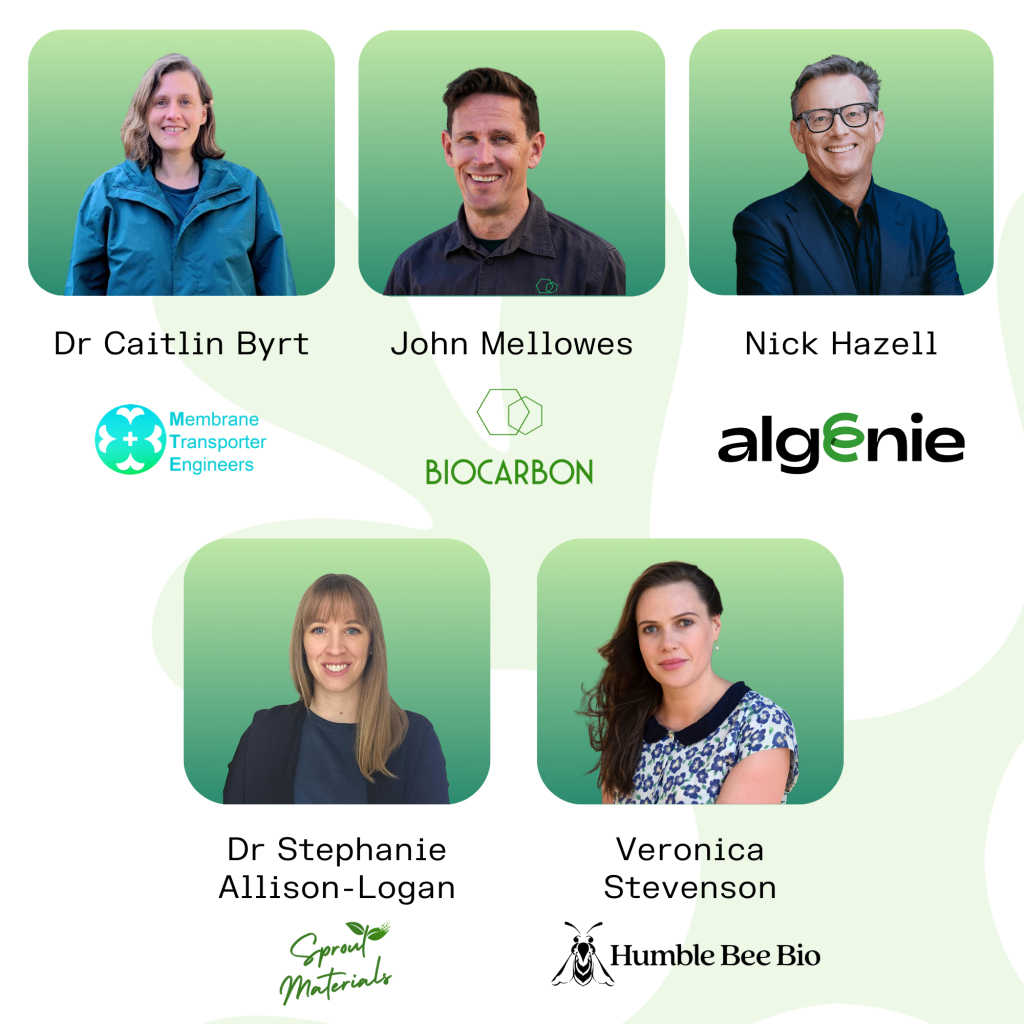
Membrane Transporter Engineers (MTE) – Reclaiming value from industrial wastewater.
Membrane Transporter Engineers (MTE) is developing nature-inspired membrane technologies that recover high-value materials like lithium, cobalt, and phosphorus from complex industrial wastewater. By mimicking how plant cells selectively transport nutrients, their tech supports a circular economy, turning waste into resources for agriculture, mining, and clean energy.
BioCarbon – Turning waste wood into clean industrial fuel.
Coal is still widely used in heavy industry, but BioCarbon is replacing it with a renewable alternative made from forestry waste. Their patented process turns wet, unprocessed wood into GreenChar, a high-grade carbon product that powers electric furnaces for steelmaking. It requires no external energy and has completed industry trials, with a commercial plant underway. BioCarbon proves that fossil fuels aren’t just replaceable, they’re outperformed by waste.
Algenie – Making algae the foundation of tomorrow’s industrial economy.
Their patented helical photobioreactor grows cyanobacteria using light and wasted renewable energy, with no farmland or added CO₂. The system absorbs two kilograms of carbon for every kilogram of product, and is up to 50 times cheaper than existing photobioreactors. By unlocking low-cost, large-scale algae production, Algenie enables sustainable alternatives for fuels, plastics, proteins, and lays the foundation for a new, climate-positive industrial economy.
Sprout Materials – Packaging foam that can actually be recycled.
Polyurethane foam is everywhere, from packaging to furniture and is rarely recycled. Sprout Materials has developed a chemically recyclable alternative that performs like conventional foam and works with existing manufacturing systems. Built on patented ANU chemistry, Sprout Materials’ circular materials let producers meet sustainability targets without compromise. It’s a practical climate solution ready for scale.
Humble Bee Bio – Reawakening elastin, nature’s forgotten molecule.
After puberty, the body stops producing elastin, leading to signs of ageing and reduced tissue flexibility. Humble Bee Bio has created a bioinspired peptide that restarts elastin production, delivering visible results in 12 hours and 500% better performance than existing ingredients. Clean, sustainable, and clinically validated, it’s set to disrupt the aesthetics market. A portion of profits supports Indigenous-led biodiversity initiatives, blending scientific innovation with purpose-driven impact.
Re-Sourcing the World
Transforming carbon, waste, and critical minerals into the raw materials that will power a climate-conscious, resource-constrained future.
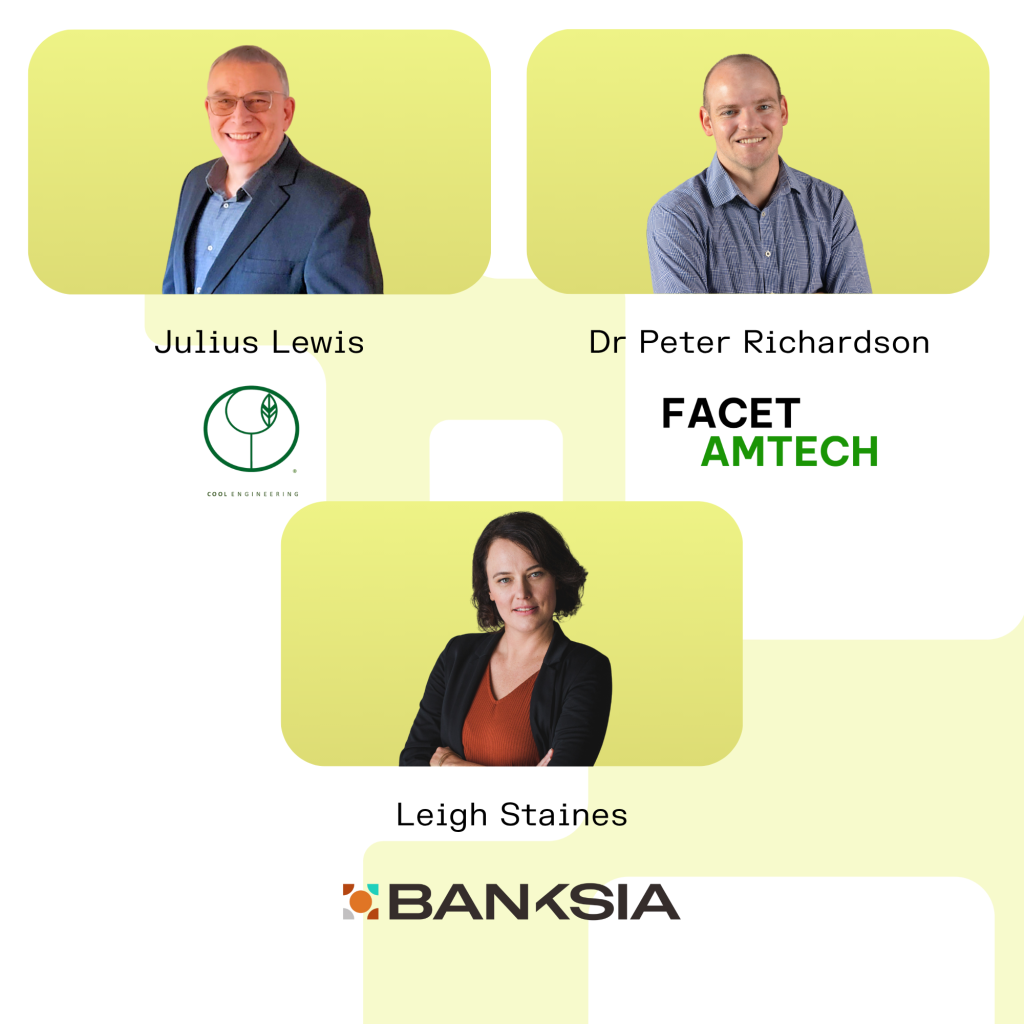
COOL ENGINEERING – Capturing carbon and turning it into clean fuel.
COOL ENGINEERING has built a compact, modular “COOL plant” that captures carbon dioxide from the air and industrial sources, and converts it into drop-in hydrocarbon fuels. The process requires no fossil inputs or high pressure, and mimics the carbon-capturing power of trees in minutes. Patented in the US, Europe, India, and Australia, the system is designed to integrate with sectors like steel, cement, and transport. With pilot deployments underway, it offers a scalable path to closing the sustainable aviation fuel gap.
Facet Amtech – A clean alternative to one of the world’s dirtiest processes.
Ammonia is essential for food and fuel, but current production relies on fossil fuels and extreme conditions. Facet Amtech has developed a catalyst that enables ammonia synthesis at room temperature without high heat or pressure. Their process bypasses the 100-year-old Haber-Bosch method, slashing emissions and costs. Spun out of the University of Newcastle, this Australian innovation opens the door for clean ammonia as a fuel and fertiliser in a decentralised, low-carbon economy.
Banksia Minerals Processing – Rewiring copper for a zero-carbon future.
Copper smelting is one of the dirtiest industrial processes, reliant on high heat and fossil fuels. A clean electrochemical alternative uses room-temperature electrolysis to cut emissions and cost. Developed by Banksia Minerals Processing, this innovation offers a scalable, low-impact path to decarbonise copper production, just as copper demand accelerates.
Engineering New Capability
Deep tech that enables the impossible: sensing, navigating, and operating in environments beyond the reach of legacy systems, from autonomous flight to quantum-scale perception.
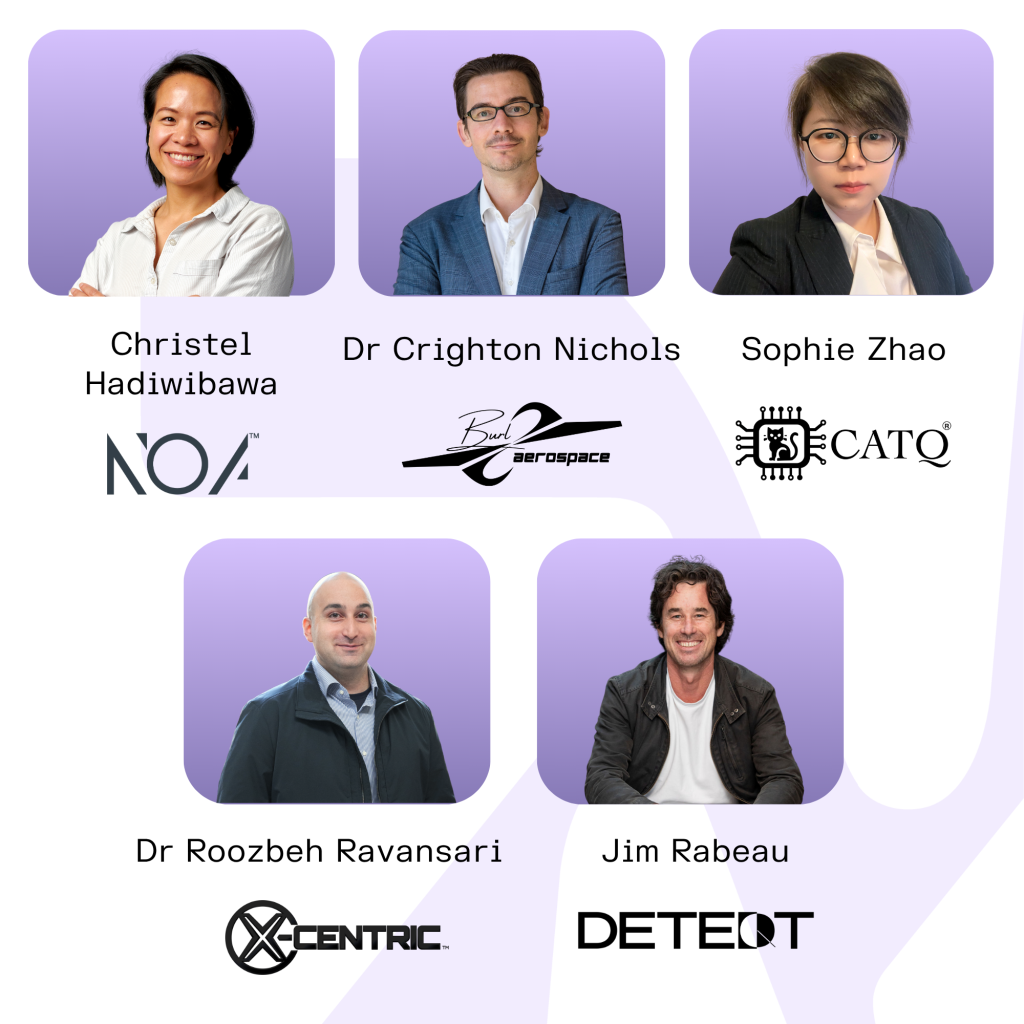
Powered by NOA – Wireless charging for autonomous systems, no plugs required.
Powered by NOA is revolutionising wireless charging, enabling uninterrupted operations until efficient battery technology is fully realised. Powered by NOA fixes that with rugged, wireless charging systems for drones, robots, and mobile machinery. No plugs, no downtime, no human intervention. Their tech enables seamless, self-directed charging in real-world conditions. Backed by Sydney Angels and Startmate, Powered by NOA is already piloting with enterprise customers across Australia and beyond.
Burl Aerospace – Heavy lift, anywhere, with next-gen vertical flight.
Transporting heavy or oversized cargo usually requires runways or helipads. Burl Aerospace is building an aircraft that doesn’t. Their mono-wing rotor system separates lift and thrust, enabling extreme payloads to be deployed from rooftops, remote terrain, or disaster zones. Backed by aerospace veterans and working with defence and emergency services, Burl is reimagining where and how aerial logistics can go. Built in Australia, designed for global movement.
CatQ – Fixing the Achilles heel of quantum computing.
Quantum computers are powerful but extremely error-prone. CatQ has developed a way to correct optical quantum errors before they happen, improving performance up to 1,000x. Their technology delivers near-perfect efficiency, solving a key barrier to real-world quantum applications. Spun out of the labs of UQ professor Timothy Ralph and ANU global optics expert Dr Sophie Jie Zhao, CatQ is grounded in Nobel Prize-winning science and positioned to advance quantum computing worldwide.
X-Centric Sciences – Lab-grade soil testing, instantly and on-site.
Soil testing is slow, costly, and fragmented. X-Centric Sciences has developed a handheld device that delivers lab-grade analysis on-site in minutes, including carbon and full chemical profiles. It replaces weeks-long delays with instant insights for farmers, agronomists, and sustainability teams. Now piloting with PepsiCo, X-Centric Sciences is showing how better soil data supports sustainable agriculture across global supply chains.
DeteQt – Quantum sensing for when GPS fails.
GPS is essential, but often unreliable in underground, remote, or contested environments. DeteQt has developed a compact quantum magnetometer that uses diamond electron spin to detect magnetic anomalies, enabling precise, drift-free navigation without satellites. Their sensor integrates directly with a custom silicon chip, a global first, and is already backed by a $3.4 million Australian Defence contract. From Sydney labs to national security, DeteQt is redefining positioning.
A New System of Care
Healthcare is shifting from reactive to preemptive, with sensing, diagnostics, and monitoring systems that act before symptoms appear.
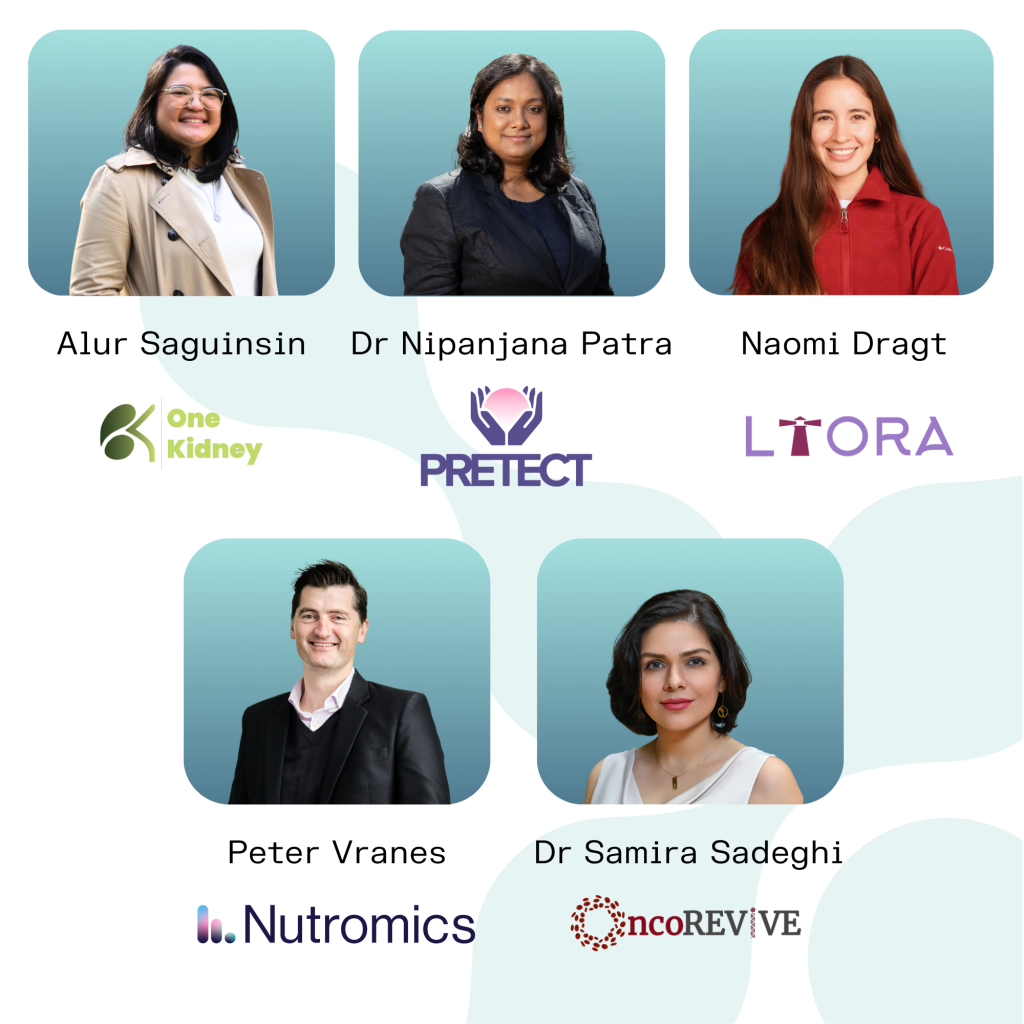
One Kidney – Reimagining life after kidney failure, no dialysis, no waiting list.
A fully implantable artificial kidney is in development to restore natural function, with no machines, no donor waitlists. One Kidney’s bioinspired membrane system began after engineer Alur Saguinsin witnessed her father’s struggle with kidney failure. She built a high-efficiency external dialyser, now in clinical validation, and is working to bring the next generation of renal care to life.
Pretect Devices – Monitoring intravenous infusion in infants to ensure treatments are delivered safely
In neonatal intensive care, undetected IV leakage can cause life-threatening internal burns. Pretect Devices has developed Vedette, a wearable monitor that continuously checks for early signs of fluid leakage. Inspired by the founder’s experience with her newborn, the device alerts clinicians in real time to prevent harm. It’s a breakthrough in neonatal safety from lived experience to life-saving tech.
Liora Neurotech – Predicting psychiatric relapse before it happens.
Psychiatric relapse can escalate fast, often without early warning. Liora Neurotech is developing Lumara, a wearable biosensor that tracks biomarkers like cortisol, inflammation, and melatonin to detect relapse risk in schizophrenia and bipolar disorder. Founder Naomi Dragt brings both research expertise and personal caregiving experience. With continuous sensing, Lumara helps patients and clinicians take proactive steps earlier, shifting mental healthcare from reactive to preventative.
Nutromics – Saving lives through continuous diagnostic monitoring.
Microneedles and DNA-based biosensors now allow biomolecules to be tracked in real time at the bedside. Nutromics’ lab-on-a-patch delivers continuous diagnostic insights, replacing delayed lab data with minute-by-minute visibility. It enables ICU teams to track treatment responses minute by minute. Already tested in humans and backed by $20 million, Nutromics is the first clinically ready system delivering real-time, continuous biomolecular monitoring at the bedside.
OncoRevive – Detecting cancer earlier, from a single drop of blood.
Early cancer detection can save lives, but current tests often miss the first signs. OncoRevive has created a blood test that’s over a billion times more sensitive than standard methods. Analysing DNA, proteins, and sugars in a single sample, their AI-driven platform spots cancer early, with results in hours. It’s a powerful leap toward faster, more accurate, and more accessible diagnosis worldwide.
The Built World, Upgraded
From self-monitoring infrastructure to energy systems that respond in real time, these startups are embedding intelligence into the physical world, redesigning how we live, move, and power a planet under pressure.
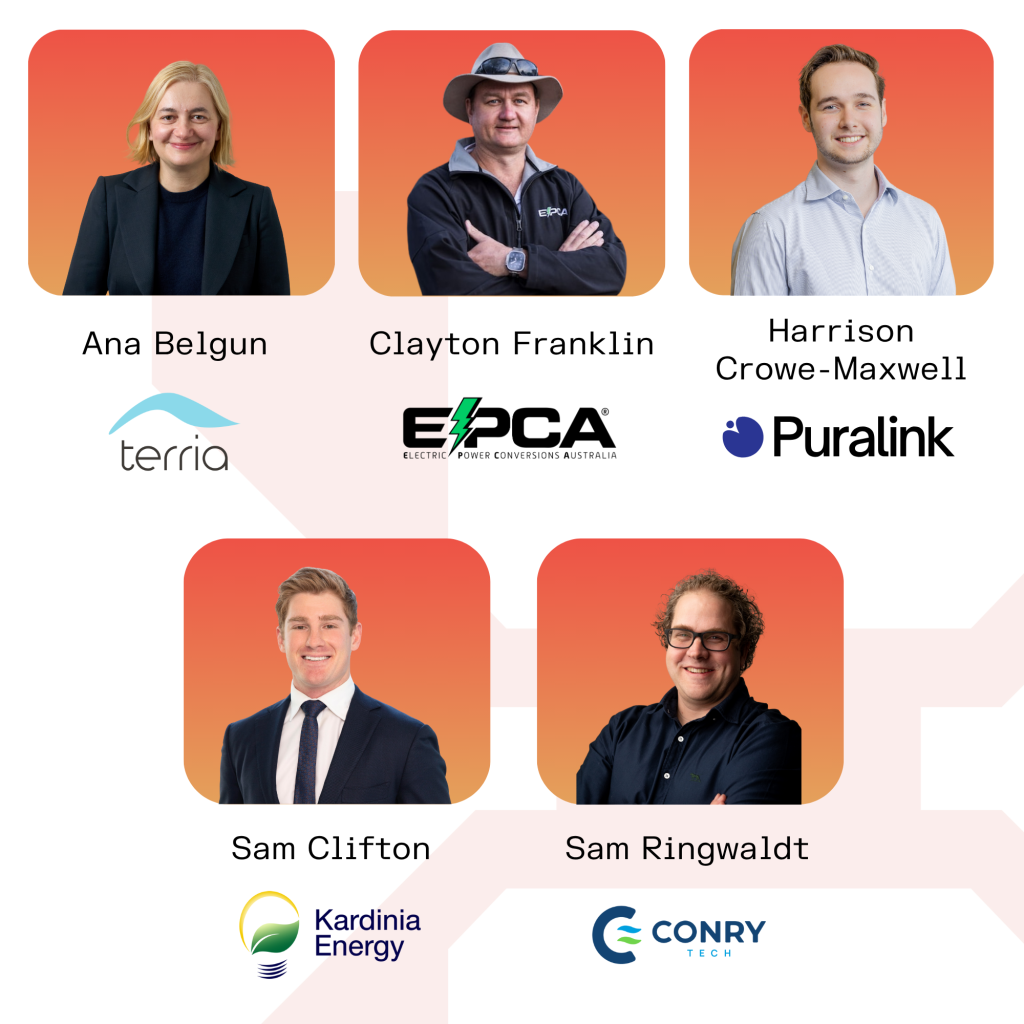
Terria – Making complex location data easy to use.
Critical location data is often buried in technical systems, accessible only to specialists. Terria’s open-source platform changes that, letting anyone build interactive maps and digital twins without specialised skills. Used for Australia’s National Map and the NSW Spatial Digital Twin, it helps governments and businesses visualise data to inform decisions. With new SaaS features and growing adoption, Terria is becoming essential digital infrastructure for a data-driven world.
Electric Power Conversions Australia (EPCA) – Electrifying mining fleets without replacing them.
Haul trucks are mining’s biggest emitters, and most still run on diesel. Electric Power Conversions Australia (EPCA) retrofits existing fleets with 100% battery-electric powertrains, retaining up to 80% of original parts while eliminating fossil fuels. Founded by Wunumara engineer Clayton Franklin, their system achieves world-leading battery energy density and better performance than diesel. It’s a circular, cost-effective path to net zero, engineered in Western Australia for a global industry under pressure to change.
PuraLink – How do you fix a broken pipe you can’t reach?
Pipelines are critical but often invisible until something fails. PuraLink has developed autonomous robots that travel inside complex underground pipes to map, inspect, and detect issues without excavation. Designed to navigate sharp bends and variable diameters, their tech supports water, mining, and gas operators. PuraLink offers a smarter solution for infrastructure the world depends on.
Kardinia Energy – Flexible solar, built to move.
Kardinia Energy’s printed solar is lightweight, flexible, and recyclable, printed roll-to-roll for rapid, low-cost deployment. Designed to cover vehicles, temporary structures, or rooftops, it delivers clean energy anywhere. Already touring with Coldplay and used in remote communities, Kardinia Energy’s Australian-made tech proves solar can be portable, circular, and scalable worldwide.
ConryTech – Smart, modular air-conditioning that cuts energy use by 70%.
Traditional HVAC systems are inefficient and energy-intensive. ConryTech’s BullAnt platform delivers heating and cooling exactly where and when it’s needed, using up to 70% less energy. Lightweight, fast to install, and designed for smart electrification, BullAnt transforms buildings into grid-responsive assets. The team behind Turbocor, which helped save over a gigaton of CO₂ globally, is once again reshaping building performance with global impact from Australian innovation.
Look back on the week that was with hand-picked articles from Australia and around the world. Sign up to the Forbes Australia newsletter here or become a member here.


